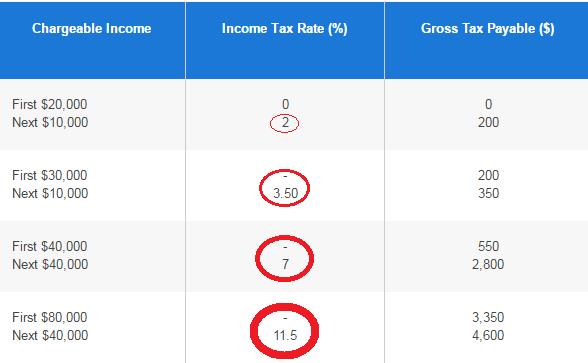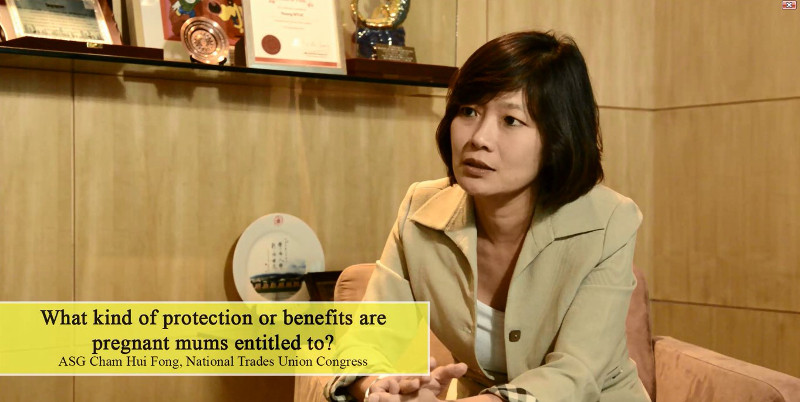Working mums are increasingly threatened with losing their jobs, whether it be due to discrimination, retrenchments or forced terminations. I was unemployed for a while in the past, and my friend June, is now jobless. It’s not a choice she wanted, but she had to accept her second retrenchment in February this year.

I caught up with her over coffee to find out how she’s doing. She shared how she survived her first retrenchment, and how she’s still keeping her hopes up after her second retrenchment. There are quite a few useful tips she shared with me, and I hope they will be useful to all mothers out there, or to any working mum who is facing the prospect of being jobless.
Important Tips for Working Mothers When They Lose their Job
1. If you lose your job while pregnant, check if you qualify for maternity benefits
June was 4 months pregnant when she received news of her first retrenchment in 2013. As she had worked for the company for more than 3 months, she qualified for maternity benefits of 4 months under the Marriage and Parenthood Package. According to the Ministry of Manpower (MOM), from 1 May 2013 onwards, the maternity protection period for working mothers who are retrenched or dismissed without sufficient cause will be extended to cover the full pregnancy period.
If you’re unsure whether you qualify for maternity benefits, check out the MOM website.
2. Ensure you receive your CPF contributions
Take note that some items you receive in your retrenchment package are eligible for CPF contribution. The items liable for CPF contribution and taxation are:
- Pro-rated Annual Wage Supplements (AWS)
- Pro-rated unconsumed annual leave
- Allowances and/or bonuses
- Payment in-lieu of maternity leave
- Payment in lieu of notice of termination (if applicable) – this is only taxable, no CPF contribution
However CPF has an Ordinary Wage Ceiling of $6,000 and if what you get for the month exceeds that, you lose out on the CPF contributions for anything above $6,000.
3. Reduce your family’s taxable income via sharing reliefs
The irony of being retrenched is that when you receive your retrenchment package, your taxable income increases accordingly. This means you have to pay more in taxes the following year, and if you’re still unemployed, it’s a double whammy because you’re forking out more in taxes due to your retrenchment benefits.
June suggests that when you e-file your taxes, take the effort to go through the list of reliefs you can claim as a working parent (even if you’re not working now).
Compare your taxable income with your husband’s. You can use the IRAS Tax Calculator.
For me as a rule of thumb, the person who has a higher taxable income for the year gets more reliefs, because the income tax percentages increase more steeply (note how the numbers in the red circles increase).

If I can reduce both my husband’s and my taxable income to about the same level, the Parenthood Tax Rebate can be used over a longer period of time.
4. How to retain your working mum benefits
Once you become unemployed, you realise how many benefits working mums actually get because you’re faced with the prospect of losing them. The most painful benefit to lose (besides the tax reliefs) is the working mother childcare subsidy, which can be up to $300 a month! However non-working mums still get a subsidy of $150 a month.
Subsidy rates for children (aged above 18 months, below 7 years)
- Working mother – $300 (full day childcare), $150 (half day childcare)
- Non-working mothers – $150 (full or half day childcare)
For jobless mums to retain their working mum status:
- Appeal to ECDA through your childcare to keep your working mother status with your retrenchment letter
- Have a backup plan to freelance or get a temporary job so you can prove you’re working more than 56 hours a month
- If you decide to be self-employed, make a statutory declaration at Supreme Court to submit to childcare to submit to ECDA
5. How to find a new job

Finding a job is actually one of the hardest things to do because if you’re a parent, it is difficult to work long hours, shift work and even accept overseas postings.
If you do decide to be a stay-at-home-mum but want to work part-time, here are some options you can consider. If you still want to go back to the workforce full-time, ensure that it is easy for employers to find you.
- Post your resume on job portals (and sign up for job listing alerts)
- Set up a LinkedIn account
- Check out these 9 sources of assistance for jobs (sbr.com.sg)
- Join networking events
- Register with headhunters
- Attend job fairs
- Consider Professional Conversion Programmes or P-MAX (Ceased since 1 Jan 2022) for SME jobs
- Be open to sharing with your friends and relatives that you’re looking for a job (with specifics)
Both June and I know that it is easier said than done, but I think if we and our fellow mums can survive the trials of pregnancy and childbirth, we definitely have it in us to survive unemployment.
By Jules of Singapore and June Lim.
* * * * *
Like what you see here? Get parenting tips and stories straight to your inbox! Join our mailing list here.
Want to be heard 👂 and seen 👀 by over 100,000 parents in Singapore? We can help! Leave your contact here and we’ll be in touch.






























































Leave a Comment: